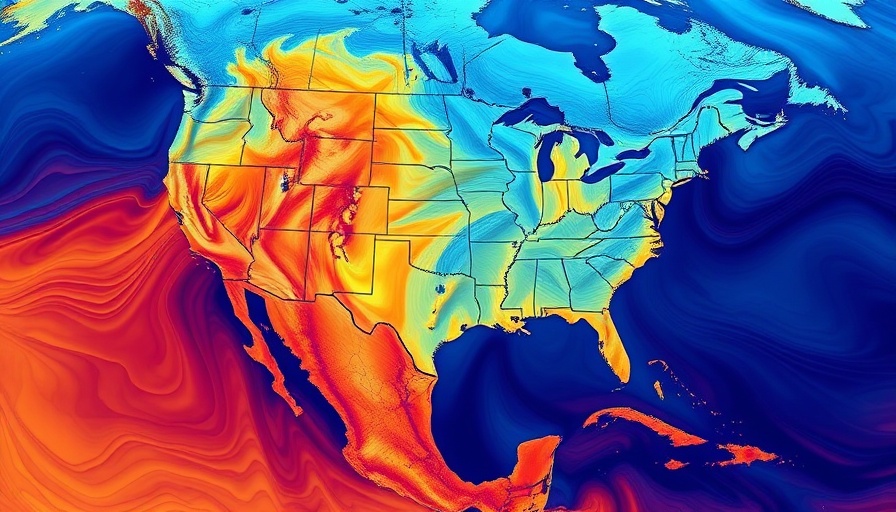
Exploring New Heights: NASA's AWE Mission Unveils Insights
NASA's Atmospheric Waves Experiment (AWE) recently achieved a remarkable milestone by releasing data from its first 3,000 orbits around Earth aboard the International Space Station. This data, which consists of over five million images capturing atmospheric gravity waves and airglow, marks a significant advancement in our understanding of the forces influencing both terrestrial and space weather. The initiative aims to uncover the subtler disturbances in Earth's atmosphere and their implications for technology reliant on satellite systems.
What are Atmospheric Gravity Waves?
Atmospheric gravity waves are natural phenomena resulting from interactions in Earth's atmosphere, often correlated with weather events and topographical factors. These waves have puzzled scientists for years; however, AWE's findings will allow for broader studies that were previously limited to select ground-level observation points. "AWE is providing incredible images and data to further understand what we only first observed less than a decade ago," noted Esayas Shume, AWE program scientist at NASA Headquarters.
How AWE Data Enhances Satellite Technology
The data collected by AWE is pivotal for understanding how atmospheric disturbances can affect satellite operations, from GPS systems to communication satellites. Principal investigator Ludger Scherliess emphasized that their collected information will help better predict space weather that can lead to disruptions. Given society's increasing dependency on satellites, understanding these interactions is crucial for developing robust technological frameworks.
The New Era of Atmospheric Research
With advancements in capturing data from a vantage point in space, researchers are poised to study atmospheric gravity waves on a global scale. The AWE instrument will facilitate analyses that extend beyond regional studies, unlocking insights into the energy and momentum of these waves. As Scherliess remarked, "AWE opens a whole new chapter in this field of research." This shift from localized observations to near-global measurements is crucial for responding to climate variability and weather patterns.
Looking Ahead: Future Implications of AWE's Findings
As data compiled through AWE becomes publicly available, researchers anticipate an array of discoveries. Understanding how gravity waves interact with larger weather systems could catalyze groundbreaking developments in predictive meteorology and space weather forecasting. The collaborative efforts of the scientific community could lead to improved communication strategies and contingency plans in response to space weather phenomena that could disrupt everyday technology.
Conclusion: Why This Data Matters
The release of AWE’s initial data set is not just a milestone in space research; it's an invitation for scientists worldwide to explore how Earth's atmospheric patterns affect our daily lives. Given the importance of satellites in modern communication and navigation, utilizing this new data could enhance our resilience against the whims of nature. This mission reaffirms our ability to harness technology and space for the betterment of society, reminding us how interconnected our atmospheric conditions are with our technological dependencies.
For anyone intrigued by how weather impacts technology and daily life, the exploration of AWE data opens doors to new possibilities. Stay tuned as researchers continue to unravel the mysteries of atmospheric dynamics!
 Add Row
Add Row  Add
Add 




Write A Comment